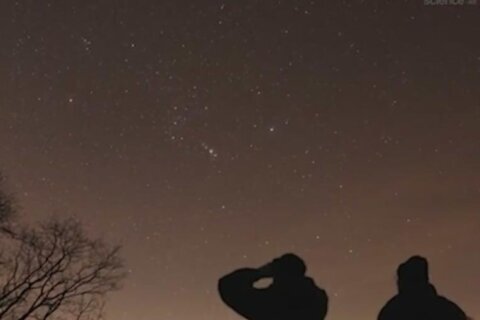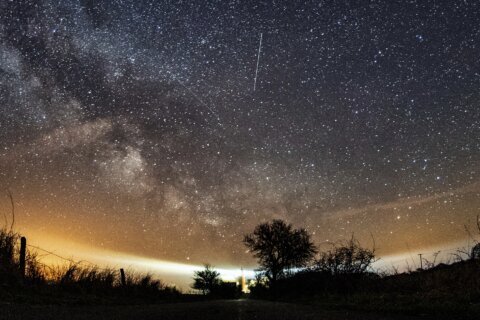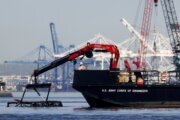WASHINGTON — The National Zoo makes no secret that its Giant Pandas are the stars of the show.
And the annual “Giant Panda pregnancy watch” is the biggest attention grabber of all.
Each spring, for more than a decade, the Smithsonian Institution National Zoological Park’s publicity machine has rolled out enough panda fodder to keep the public (and news organizations) steeped in “is she pregnant or isn’t she” hype.
One of the things that helps stoke the excitement is that even scientists can’t really tell whether the female giant panda Mei Xiang is pregnant.
So, while scientists at the zoo monitor behavioral changes and hormone levels, trying to decipher whether there’s a cub in the oven, the Giant Panda’s belly doesn’t provide the telltale signs that a human belly can.
Either a baby panda will be born — always described as “the size of a stick of butter” — or zoo officials declare it was a pseudopregnancy.
This will be remembered as the year the zoo Instagrammed the travels of semen donated by Hui Hui, a 9-year-old panda living in China.
Thankfully, the zoo did not document the “harvesting” of the sample.
What do you do with something as valuable as semen from an endangered species. Bank it, obvi. This is the panda sperm bank at the Bifengxia panda base. SCBI research scientist Dr. Caitlin Burrell made a withdrawal from the vaults of liquid nitrogen tanks yesterday to bring back to SCBI’s cryopreservation bank at the National Zoo. Cryobanks enable scientists to preserve 90 percent of the genetic diversity of the panda population in human care for the next 200 years. And they only have to move the frozen semen rather than a bear. #InstaScience #PandaStory A photo posted by Smithsonian’s National Zoo (@smithsonianzoo) on
The gray case is the frozen semen at the airport checking in. Check list when traveling with frozen panda sperm: 1 SCBI scientist. Several Chinese colleagues & scientists to help through customs. 1 passport and all of the official import permits. #InstaScience #PandaStory A photo posted by Smithsonian’s National Zoo (@smithsonianzoo) on
Dr. Burrell with the endangered cargo leaving Chengdu. Next up: the 13 hour trans-Pacific flight. Sperm temp. -196 degrees Celsius. Science travel pro-tip: Frozen semen can be considered a carry-on. #InstaScience #PandaStory A photo posted by Smithsonian’s National Zoo (@smithsonianzoo) on
We’re still waiting for Dr. Burrell to land in the U.S. with the frozen panda semen. In the meantime for anyone wondering how we keep sperm viable indefinitely, we freeze it at -196 degrees Celsius. It potentially has a shelf-life of forever. For one successful artificial insemination, giant panda scientists need billions of sperm. Luckily, billions of sperm fit in small straws inside a liquid nitrogen tank (like these). #InstaScience #PandaStory A photo posted by Smithsonian’s National Zoo (@smithsonianzoo) on
First planes, now trains. Frozen panda semen on the shuttle to the main terminal, just like everyone else #PandaStory #InstaScience A photo posted by Smithsonian’s National Zoo (@smithsonianzoo) on
For the final trip the frozen panda semen is secured upright in the back of the National Zoo police car. The container has been in an upright position for 7,000 miles. If it were on its side the temperature would have fluctuated from -196 degrees Celsius. #PandaStory #InstaScience A photo posted by Smithsonian’s National Zoo (@smithsonianzoo) on
And now the panda semen can just chill out here in the endangered sperm bank. #InstaScience #PandaStory A video posted by Smithsonian’s National Zoo (@smithsonianzoo) on







